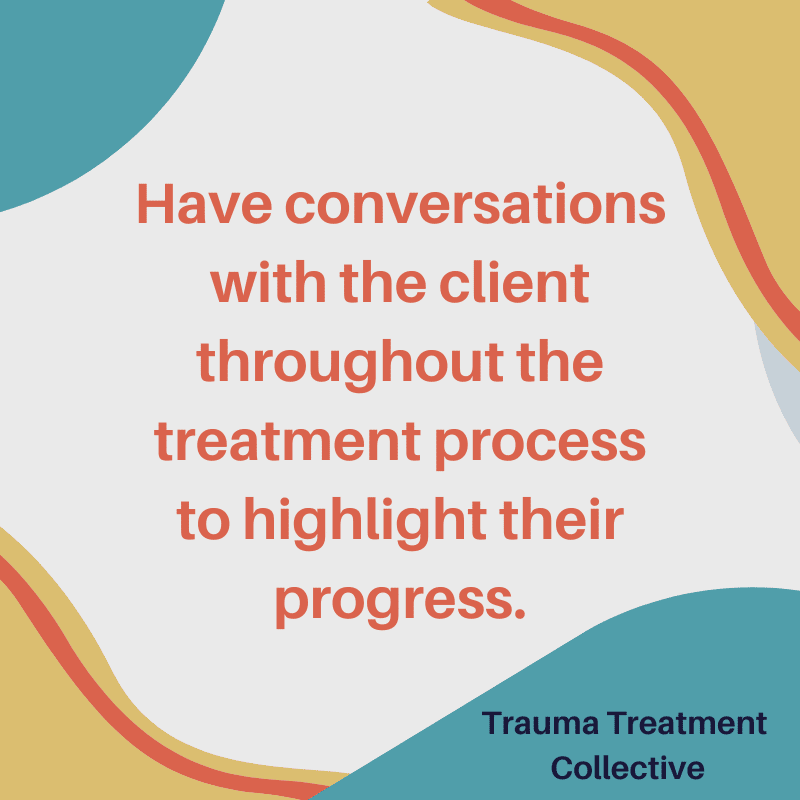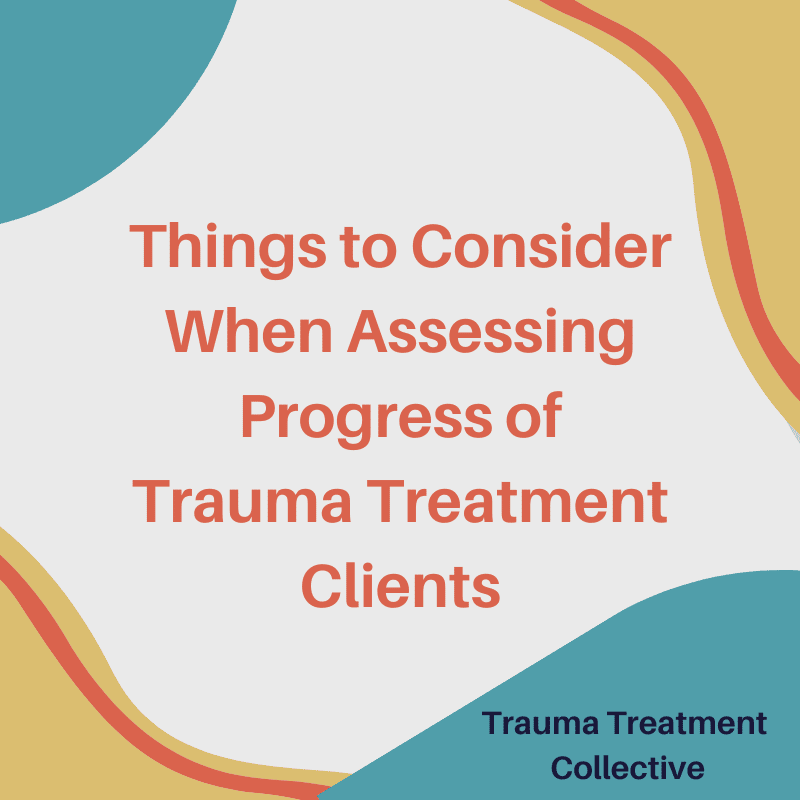
Most of our clients come to us because they desire change. They have goals in mind that they want to accomplish. Their goals can be a strong motivator for change. I have found it helpful to have conversations with clients throughout the treatment process to highlight their progress, make necessary changes to their goals, and cross goals off the list as they are accomplished.
It is my habit to do a little inventory of progress every now and again. Sometimes I designate a day to step away from my office and go through cases. Other times I schedule a consultation with my professional consultant to review cases. And other times, I add some time to the end of my vacation to review cases before I return to work. I find it easier to take a step back and look at the bigger picture when I have dedicated time.

So, here are a few things I consider in this process of assessment and evaluation.
1. Treatment plans
I am a huge believer in the treatment plan and how it can help keep us focused in the treatment process. I believe it is a living document, which means it can be adjusted at any time to meet the needs of your clients. Try to use it to your benefit to track progress. I mark every three months in my planner to review the client’s treatment plans. Also, check out this past vlog post about documentation in trauma treatment for more info.
2. Look at the bigger picture
This is where taking a bird’s eye view can be helpful. Look at behaviors and symptoms over time. I like to encourage clients to track frequency, duration, and intensity with me. I am very careful to communicate that I don’t expect symptoms and behaviors to go away immediately. I am more interested in what changes manifest over time in their behaviors and symptoms. I like to explain to my clients that small shifts in symptoms allow the client’s system to integrate the change, which leads to great probability for sustainable change over time.
3. Consider each client’s overall capacity to manage emotions
I track the client’s ‘vibe’, which is the feel the client gives during their interaction with me. I am looking for more ability to sustain a sense of calm and connection over time. I love to track how 2 aspects change over time: the client’s ability to regulate as well as how they enter into session. For example, some clients come into the office with a very chaotic energy or they may come in with a very slow, lethargic energy. Over time, I am noticing how their mood and energy shifts upon starting sessions. For most of my clients, this has been a direct indicator of more regulation in their system.
Overall, I remind myself that trauma treatment can be a slow process for many, and that’s perfectly okay. I also remind myself to notice the “small” wins because those are the things that are most sustainable over time for many clients.

